Items Similar to Frau in der Wanne (Woman in Tub) /// German Expressionism Schmidt-Rottluff Nude
Want more images or videos?
Request additional images or videos from the seller
1 of 24
Karl Schmidt-RottluffFrau in der Wanne (Woman in Tub) /// German Expressionism Schmidt-Rottluff Nude 1915
1915
About the Item
Artist: Karl Schmidt-Rottluff (German, 1884-1976)
Title: "Frau in der Wanne (Woman in Tub)"
Series: Die Aktion
*Unsigned edition
Year: 1915
Medium: Original Woodcut Engraving on cream smooth wove paper
Limited edition: Unknown, (there was also a signed edition on laid paper with wider margins in an unknown edition size)
Printer: F.E. Haag, Melle, Hanover, Germany
Publisher: Verlag der Wochenschrift DIE AKTION, Berlin, Germany
Reference: "Das Graphische Werk Bis 1923" - Schapire No. 171; Söhn No. 40502
Framing: Recently framed in a gold moulding with Artglass AR 92 non-reflective 92% UV protection glass. All archival
Framed size: 16" x 13.25"
Sheet size: 11.5" x 8.75"
Image size: 10" x 7.25"
Condition: Faint UV staining to sheet and light toning at edges. It is otherwise a strong impression in excellent condition
Extremely rare
Notes:
Provenance: private collection - Kiel, Germany. Comes from the famous "Die Aktion" publication, likely Vol. 5, No. 13 published March 20th, 1915.
In 1911 Franz Pfemfert, a cantankerous critic of capitalism and Wilhelmine society, founded Die Aktion as a political and literary journal. In April of the following year, a new subtitle declared the journal a "weekly for politics, literature, and art." Although politics remained the priority, Die Aktion began featuring visual art coverage as well as original prints and illustrations.
Artist Max Oppenheimer (MOPP) worked closely with 'Die Aktion' in its early years, portraying in its pages many of the young writers who gave the journal its distinctive voice. Egon Schiele made his first woodcuts at Pfemfert's urging in 1916, for publication in the journal. Other frequent contributors included Ludwig Meidner and, later, Conrad Felixmüller and Karl Schmidt-Rottluff.
Adamantly opposed to World War I, Pfemfert skirted tightened censorship from August 1914 to October 1918 by treating contemporary events only through artistic and literary allusions. At a time when reading books by foreign authors was considered unpatriotic, he dedicated entire issues of Die Aktion to Russian, French, and Belgian authors and artists. In late 1918, however, Pfemfert resumed vocal political critique, siding with the radical left. His selection of prints, formerly varied, became overtly political. After 1921, he ceased art coverage altogether, decreased the number of issues, and used the publication exclusively as a mouthpiece for his own increasingly partisan views.
Biography:
Karl Schmidt-Rottluff (born December 1, 1884, Rottluff, near Chemnitz, Germany—died August 9, 1976, West Berlin [now Berlin]), German painter and printmaker who was noted for his Expressionist landscapes and nudes.
In 1905 Schmidt-Rottluff began to study architecture in Dresden, Germany, where he and his friend Erich Heckel met Ernst Ludwig Kirchner and Fritz Bleyl, two other architecture students who shared their passion for painting. Together they formed the organization of Expressionist artists known as Die Brücke (“The Bridge”), united by the goal of creating a modern, intensely emotional style.
The artists of Die Brücke typically preferred to portray scenes of urban life, but Schmidt-Rottluff is particularly known for his rural landscapes. He initially painted in an Impressionist style, but his painting Windy Day (1907) shows the artist’s transition to his mature style, which is characterized by flat areas of boldly dissonant colours. A representative example of this mature work is Self-Portrait with Monocle (1910). Like the other Brücke artists, Schmidt-Rottluff had also begun to explore the expressive potential of the woodcut medium. In 1911 Schmidt-Rottluff, with his fellow Die Brücke members, moved to Berlin, where he painted works with more angular, geometric forms and distorted space, revealing his new interest in Cubism and African sculpture.
After World War I Schmidt-Rottluff became increasingly interested in religious themes, as seen in the woodcut Head of Christ (1918), which is one of a series of prints about the life of Christ. During the 1920s Schmidt-Rottluff’s work became more subdued and harmonious, losing much of its former vigour and integrity. When the Nazis gained power in Germany, he was forbidden to paint. After World War II he taught art and resumed painting, although he never regained the power of his early works.
- Creator:Karl Schmidt-Rottluff (1884-1976, German)
- Creation Year:1915
- Dimensions:Height: 16 in (40.64 cm)Width: 13.25 in (33.66 cm)
- Medium:
- Movement & Style:
- Period:
- Condition:
- Gallery Location:Saint Augustine, FL
- Reference Number:1stDibs: LU12125725872
About the Seller
5.0
Platinum Seller
These expertly vetted sellers are 1stDibs' most experienced sellers and are rated highest by our customers.
Established in 1978
1stDibs seller since 2015
1,218 sales on 1stDibs
Typical response time: <1 hour
- ShippingRetrieving quote...Ships From: Saint Augustine, FL
- Return PolicyA return for this item may be initiated within 3 days of delivery.
More From This SellerView All
- Stehendes nacktes Mädchen im Profil (Standing Naked Girl in Profile) /// WoodcutBy Karl Schmidt-RottluffLocated in Saint Augustine, FLArtist: Karl Schmidt-Rottluff (German, 1884-1976) Title: "Stehendes nacktes Mädchen im Profil (Standing Naked Girl in Profile)" Portfolio: Das Spiel Christa vom Schmerz der Schönheit des Weibes (The Play Christa from the Pain of the Beauty of the Woman) *Issued unsigned Year: 1918 Medium: Original Woodcut Engraving on wove paper Limited edition: Unknown Printer: Fritz Voigt, Berlin, Germany Publisher: Verlag Die Aktion, Berlin, Germany Reference: Schapire No. 220, page 45; Jentsch No. 35. Rifkind No. 2563; Lang No. 300; Reed No. 118 Sheet size: 8.5" x 5.38" Image size: 6.5" x 3.57" Condition: Toning to sheet (as normal). In very good condition Very rare Notes: Provenance: private collection - Oxnard, CA. Comes from a complete originally bound 48 page folio with 9 original woodcut engravings by Schmidt-Rottluff. Text by Alfred Brust. The cover and title pages in pictures are not included, only for reference/provenance. There is an example of this work in the permanent collection of the Brücke Museum, Berlin, Germany. Biography: Karl Schmidt-Rottluff (born December 1, 1884, Rottluff, near Chemnitz, Germany—died...Category
1910s Expressionist Nude Prints
MaterialsEngraving, Woodcut
- Bekleidete und nackte Frau (Clothed and Naked Woman) /// German ExpressionismBy Karl Schmidt-RottluffLocated in Saint Augustine, FLArtist: Karl Schmidt-Rottluff (German, 1884-1976) Title: "Bekleidete und nackte Frau (Clothed and Naked Woman)" Portfolio: Das Spiel Christa vom Schmerz der Schönheit des Weibes (The Play Christa from the Pain of the Beauty of the Woman) *Issued unsigned Year: 1918 Medium: Original Woodcut Engraving on wove paper Limited edition: Unknown Printer: Fritz Voigt, Berlin, Germany Publisher: Verlag Die Aktion, Berlin, Germany Reference: Schapire No. 221, page 45; Jentsch No. 35. Rifkind No. 2563; Lang No. 300; Reed No. 118 Overall size with attached page: 8.5" x 10.63" Sheet size: 8.5" x 5.38" Image size: 6.5" x 3.38" Condition: Toning to sheet (as normal). In very good condition Very rare Notes: Provenance: private collection - Oxnard, CA. Comes from a complete originally bound 48 page folio with 9 original woodcut engravings by Schmidt-Rottluff. Text by Alfred Brust. Presently attached to its accompanying page. The cover and title pages in pictures are not included, only for reference/provenance. There is an example of this work in the permanent collection of the Brücke Museum, Berlin, Germany. Biography: Karl Schmidt-Rottluff (born December 1, 1884, Rottluff, near Chemnitz, Germany—died...Category
1910s Expressionist Nude Prints
MaterialsEngraving, Woodcut
- Weib Vom Manne Begehrt (Woman Desired by Man) /// Max Pechstein Woodcut ModernBy Hermann Max PechsteinLocated in Saint Augustine, FLArtist: Hermann Max Pechstein (German, 1881-1955) Title: "Weib Vom Manne Begehrt (Woman Desired by Man)" Portfolio: Deutsche Grapiker der Gegenwart (German Printmakers of Our Time *Unsigned edition Year: 1919 Medium: Original Woodcut Engraving on cream wove paper Limited edition: 500. (There was also a signed and numbered edition of 30) Printer: Unknown Publisher: Klinkhardt & Biermann, Leipzig, Germany Reference: "Das Graphische Werk Max Pechsteins" - Fetcher No. 157; Krüger No. 224 Sheet size: 12.75" x 9.5" Image size: 9.88" x 6.25" Condition: One small repaired tear lower left in margin. It is otherwise a strong impression in excellent condition Rare Notes: Provenance: private collection - Kiel, Germany. Comes from the 1920 "Deutsche Grapiker der Gegenwart (German Printmakers of Our Time)" portfolio of fifteen lithographs, eight woodcuts, eight reproductions, and one lithographed cover. Other artists who contributed to this portfolio were George Grosz, Ernst Barlach, Lovis Corinth, Richard Seewald, Heinrich Campendonk, Erich Heckel, Otto Mueller, Karl Schmidt-Rottluff, Lyonel Feininger, Conrad Felixmüller, Max Unold, Karl Caspar, Max Lieberman, René Beeh, Adolf Ferdinand Schinnerer, Ludwig Meidner, Max Beckmann, Richard Seewald, Käthe Kollwitz, August Gaul, Rudolf Grossman, Alfred Kubin, and Paul Klee. There is an example of this very same work within the permanent collection of the MoMA, New York, NY. "Deutsche Graphiker der Gegenwart (German Printmakers of Our Time)" brings together woodcuts, lithographs, and reproductions by thirty-one artists representing a cross-section of styles from Impressionism to Expressionism, uniting under a single cover works ranging from naturalistic self-portraits to left-wing political caricatures. It features works by artists associated with the Berlin Secession (an exhibiting society comprised primarily of German Impressionists), with Expressionist groups like the Brücke and Der Blaue Reiter, and with the political Novembergruppe, as well as artists like Max Beckmann who were not affliliated with any group. In his introduction, art historian Kurt Pfister identified Expressionism as the leading force in German art at the time, while stressing the plurality of approaches to style and subject matter that the movement encompassed. Pfister emphasized the openness of German artists to foreign sources, and cited the importance of Paul Cézanne, Edvard Munch, and Pablo Picasso as well as Japanese, Indian, African, and Gothic art for the development of German art. There was a fifty-year difference in age between the oldest artist, Max Liebermann, and the youngest, Conrad Felixmüller, featured in the collection. The volume also included Lyonel Feininger, an American who had lived in Germany since 1896, as well as Austrian artists Oskar Kokoschka and Alfred Kubin. Biography: Pechstein was born in Zwickau, the son of a craftsman who worked in a textile mill. Early contact with the art of Vincent van Gogh stimulated Pechstein's development toward expressionism. After studying art first at the School of Applied Arts and then at the Royal Art Academy in Dresden, Pechstein met Erich Heckel and joined the art group Die Bru¨cke in 1906. He was the only member to have formal art training. Later in Berlin, he helped to found the Neue Sezession and gained recognition for his decorative and colorful paintings that were lent from the ideas of Van Gogh, Matisse, and the Fauves. His paintings eventually became more primitivist, incorporating thick black lines and angular figures. From in 1933, Pechstein was vilified by the Nazis because of his art. A total of 326 of his paintings were removed from German museums. Sixteen of his works were displayed in the Entartete Kunst (Degenerate Art...Category
1910s Expressionist Nude Prints
MaterialsWoodcut, Engraving
- Kunsthandel Wolfgang Werner KG (Nudes) /// German Expressionism Schmidt-RottluffLocated in Saint Augustine, FLArtist: (after) Karl Schmidt-Rottluff (German, 1884-1976) Title: "Kunsthandel Wolfgang Werner KG (Nudes)" Year: 1984 Medium: Original Offset-Lithograph, Exhibition Poster on yellow wove paper Limited edition: Unknown Printer: Unknown Publisher: Kunsthandel Wolfgang Werner KG, Bremen, Germany Framing: Recently framed in a contemporary black moulding with frame space Framed size: 29.25" x 19.5" Sheet size: 27.25" x 17.75" Image size: 9.5" x 12" Condition: In excellent condition Extremely rare Notes: Poster produced for a special posthumous exhibition of Rottluff's early watercolors and printmaking "Schmidt Rottluff" at Kunsthandel Wolfgang Werner KG, Bremen, Germany from March 8 - May 12, 1984, in tribute to the artist's, would have been, 100th birthday. GIA Gallery Poster Disclaimer: Not to be confused with thousands of contemporary inkjet/giclée/digital reproductions ignorantly or deliberately passed off as originals on the market today. The examples we offer here are the original period vintage (exhibition) posters, created and designed by, or under the supervision and authorization of the artist or their respective estate (posthumously), for various exhibitions and events in which they participated. If applicable, this poster is also fully documented within its respective artists' official catalogue raisonné of authentic graphic works, prints, and or posters. Biography: Karl Schmidt-Rottluff (born December 1, 1884, Rottluff, near Chemnitz, Germany—died August 9, 1976, West Berlin [now Berlin]), German painter and printmaker who was noted for his Expressionist landscapes and nudes. In 1905 Schmidt-Rottluff began to study architecture in Dresden, Germany, where he and his friend Erich Heckel met Ernst Ludwig Kirchner and Fritz Bleyl, two other architecture students who shared their passion for painting. Together they formed the organization of Expressionist artists known as Die Brücke...Category
1980s Expressionist Nude Prints
MaterialsLithograph, Offset
- Venere e Amore sui Delfini (Venus and Cupid on Dolphins) /// Old Masters RaphaelLocated in Saint Augustine, FLArtist: Marco Dente da Ravenna (Italian, 1493-1527) Title: "Venere e Amore sui Delfini (Venus and Cupid on Dolphins)" *Monogram signed by Dente in the plate (printed signature) lower left Circa: 1515-1520 (second state of three) Medium: Original Engraving on laid paper Limited edition: Unknown Printer: Unknown Publisher: Antonio Salamanca, Rome, Italy Reference: Bartsch XIV, page 244, No. 324; Passavant VI, page 69, No. 32; Le Blanc, II, page 111, No. 16; Imolesi Pozzi pages 71-72, 113, No. 10 Sheet size: 10.63" x 6.94" Condition: Thread margins. A strong impression in excellent condition Extremely rare Notes: Provenance: private collection - Périgueux, France. This work is also sometimes referred to as "Venus and Cupid riding two sea monsters, Cupid raises an arrow in his right hand, two heads representing wind in the clouds above". The engraver's monogram "SR" lower left. Published by Antonio Salamanca (1478-1562) in Rome, Italy with his address printed lower right: "Ant. Sal. Exc.". No watermark found. This engraving is after a drawing by Italian artist Raphael aka Raffaello Sanzio da Urbino (1483-1520). Biography: Marco Dente da Ravenna (1493–1527), usually just called Marco Dente, was an Italian engraver born in Ravenna in the latter part of the 15th Century. He was a prominent figure within the circle of printmakers around Marcantonio Raimondi...Category
16th Century Old Masters Nude Prints
MaterialsLaid Paper, Engraving, Intaglio
- Canards Surpris (Surprised Ducks) /// Antique Impressionist Nude Animal ForestBy Félix BracquemondLocated in Saint Augustine, FLArtist: Félix Bracquemond (French, 1833-1914) Title: "Canards Surpris (Surprised Ducks)" *Signed by Bracquemond in pencil lower right. It is also initial signed in ink lower left Year: 1882 Medium: Original Drypoint Etching on cream Japanese paper Limited edition: 100 Printer: Imprimerie Lemercier, Paris, France Publisher: likely the artist Bracquemond himself, Paris, France Reference: "Les graveurs du XIXe siècle: Guide de l'amateur d'estampes modernes", Vol. XII, Paris, 1885–1892 - Henri Béraldi: cat. No. 778; "Inventaire du Fonds Francais Apres 1800" - Jean Adhémar, Jacques Lethève: cat. No. 394, page 383; Laran No. 394 Framing: Recently framed in a gold Baroque moulding and rag matting from Holland Framed size: 23.75" x 19.75" Sheet size: 15.25" x 11.5" Image size: 14" x 10.5" Condition: In excellent condition Notes: "B" inscribed by Bracquemond in ink lower left. There is an example of this work in the permanent collection of the Metropolitan Museum of Art, New York, NY. Biography: Félix Bracquemond was born in Paris. He was trained in early youth as a trade lithographer, until Guichard, a pupil of Ingres, took him to his studio. His portrait of his grandmother, painted by him at the age of nineteen, attracted Théophile Gautier's attention at the Salon. He applied himself to engraving and etching about 1853, and played a leading and brilliant part in the revival of the etcher's art in France. Altogether he produced over eight hundred plates, comprising portraits, landscapes, scenes of contemporary life, and bird-studies, besides numerous interpretations of other artist's paintings, especially those of Jean-Louis-Ernest Meissonier, Gustave Moreau and Jean-Baptiste-Camille Corot. After having been attached to the Sèvres porcelain factory in 1870, he accepted a post as art manager of the Paris atelier of the firm of Haviland of Limoges. He was connected by a link of firm friendship with Édouard Manet, James McNeill Whistler, and all the other fighters in the impressionist cause, and received all the honors that await the successful artist in France, including the grade of Officer of the Legion of Honor in 1889. Bracquemond was a prominent figure in artistic and literary circles in the second half of the 19th century. He was close to writers such as Edmond de Goncourt and critic Gustave Geffroy, and numbered among his friends Millet and Corot, Henri Fantin-Latour, Degas and the Impressionist circle, and Auguste Rodin. He was one of the more prolific printmakers of his time and he was awarded the grande medaille d'honneur at the Universal Exhibition of 1900. He was also a painter, ceramist, and an innovator in decorative arts. Gabriel Weisberg called him the "molder of artistic taste in his time". Indeed, it was he who recognised the beauty of the Hokusai woodcuts used as packing around a shipment of Japanese china, a discovery which helped change the look of late 19th-century art. He married French Impressionist artist Marie Bracquemond...Category
1880s Impressionist Nude Prints
MaterialsEtching, Intaglio, Drypoint
You May Also Like
- Microwave Oven (A Couple in the Sea)By Colin SelfLocated in New York, NYA contemporary of David Hockney and Peter Blake, Colin Self is an important British printmaker whose innovative etching techniques and novel use of found materials have defined his diverse oeuvre. Yet unlike most artists associated with Pop Art, Self eschewed glossy, colorful bombast for nuanced drawings in a limited palette. Self's imagery has ranged from the geopolitical -- nuclear bombers, fallout shelters; to American icons -- hot dogs, Coca Cola cans; to the everyday -- intimate scenes of animals and plants, and whimsical figure drawings as seen here. The title of this print, Microwave Oven...Category
Early 2000s Expressionist Nude Prints
MaterialsDrypoint
- Drei Grazien (Three Graces)By Lovis CorinthLocated in Fairlawn, OHDrei Grazien (Three Graces) Etching and drypoint, 1920 Signed and titled in pencil (see photo) Total Edition 100: 30 on Japan and 70 on Butten paper as here Published by von Wohlgemu...Category
1920s Expressionist Nude Prints
MaterialsDrypoint
- Peintre et modele [Modele et peintre chauve], 5 septembre 1966 IVBy Pablo PicassoLocated in New York, NYPablo Picasso Peintre et modele [Modele et peintre chauve], 5 septembre 1966 IV drypoint, edition of 50 16 1/2 x 19 5/8 in. (41.9 x 49.8 cm) Bloch 13...Category
1960s Expressionist Nude Prints
MaterialsDrypoint
- Nacktes Liegendes Mädchen auf DiwanBy Ernst Ludwig KirchnerLocated in New York, NYDrypoint printed in dark brown on heavy cream wove paper with wide margins. This is the third state (of four) from a small edition of only several. Signed and inscribed "II Zustand" ...Category
1920s Expressionist Figurative Prints
MaterialsColor, Drypoint
- Akt mit FächerBy Marc ChagallLocated in New York, NYA superb, richly-inked impression of this extremely scarce, early etching and drypoint. With burr throughout and crisp plate edges. First state (of 2). Edition of 100. Signed in penc...Category
1920s Expressionist Figurative Prints
MaterialsDrypoint, Etching
- Junges PaarBy Emil NoldeLocated in New York, NYLarge and very scarce etching, aquatint and drypoint. This richly-inked impression is the second state (of 2) from a limited edition of approximately 17. Signed and titled in pencil ...Category
1920s Expressionist Figurative Prints
MaterialsDrypoint, Etching, Aquatint
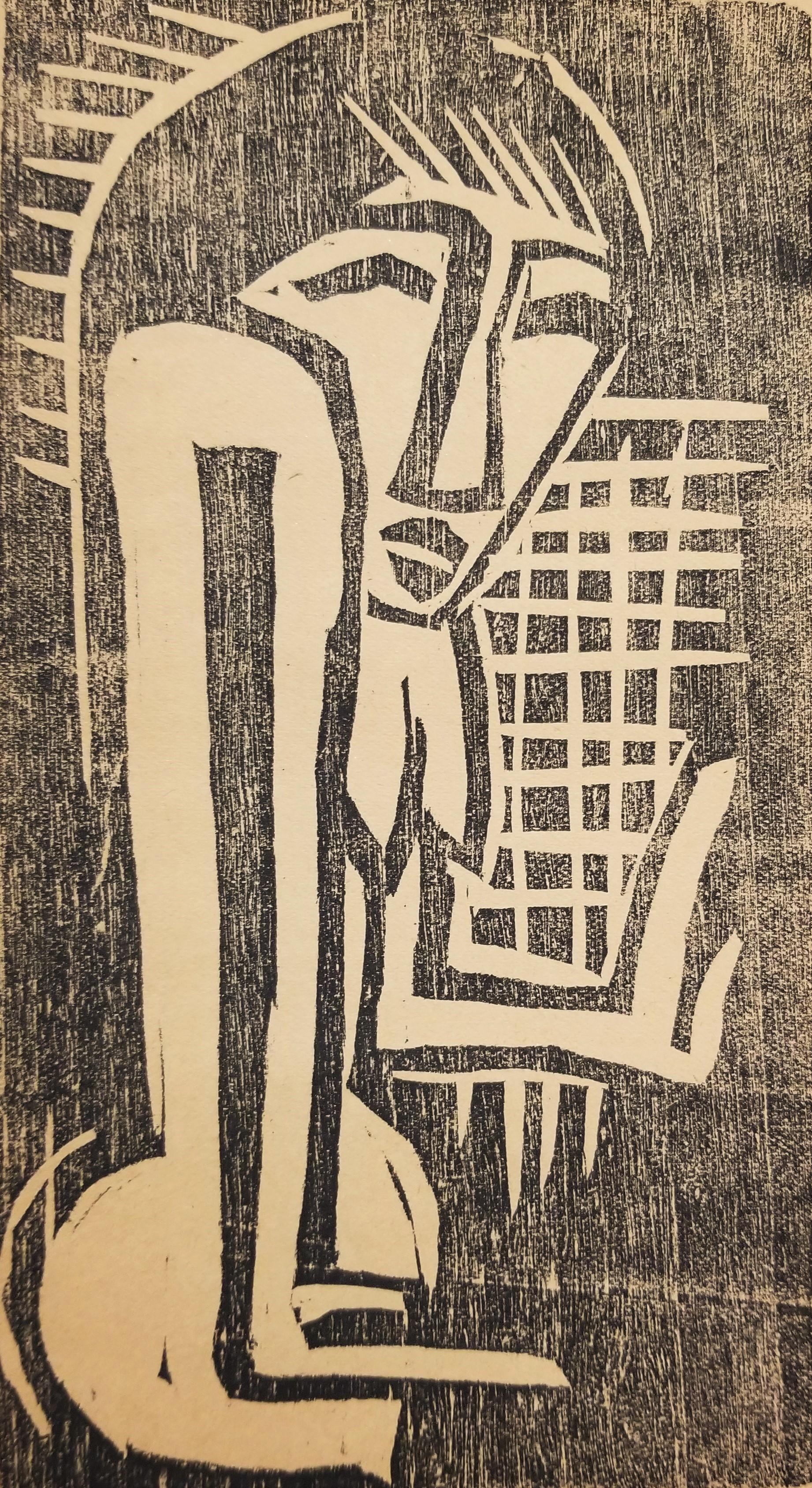
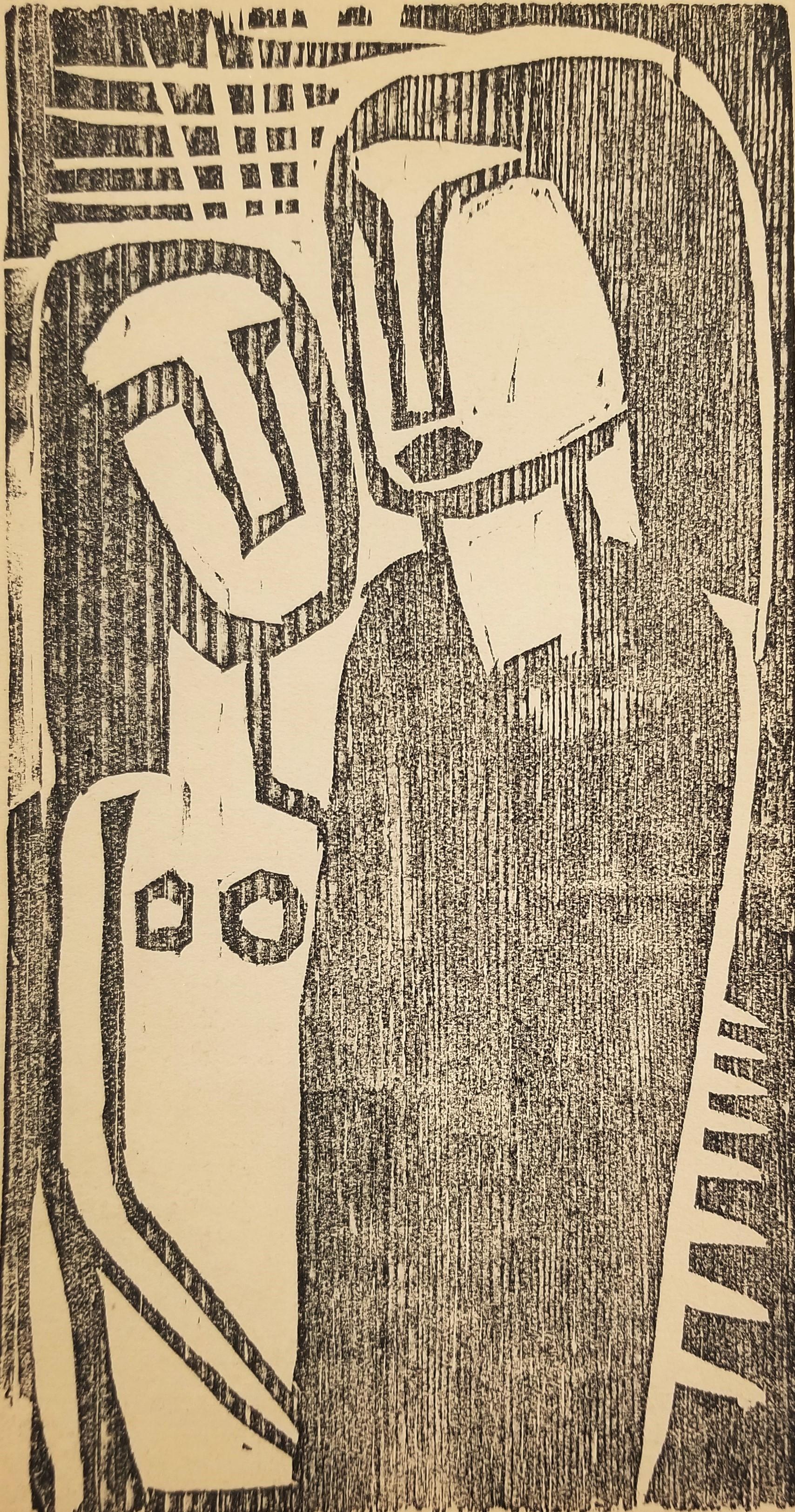
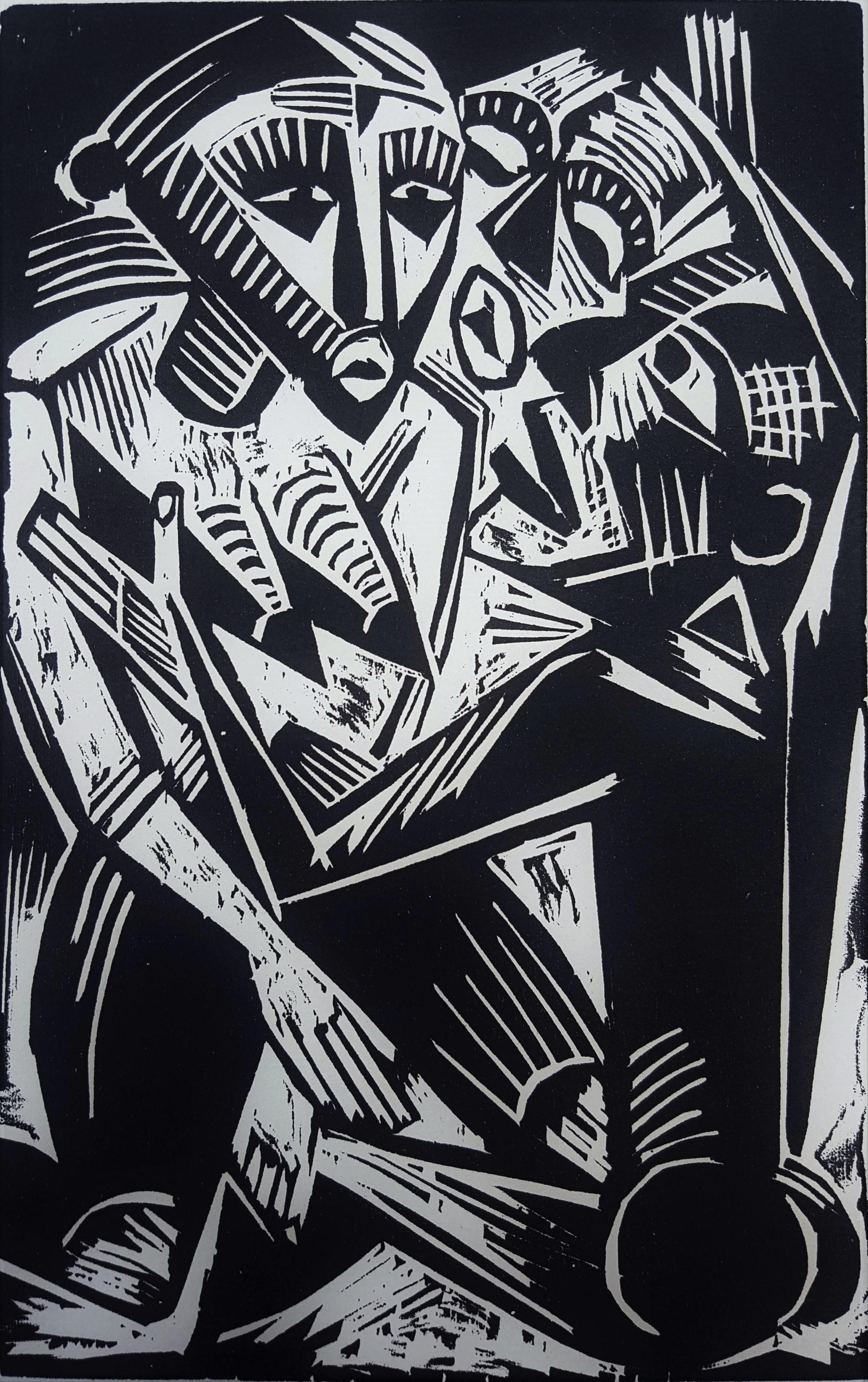
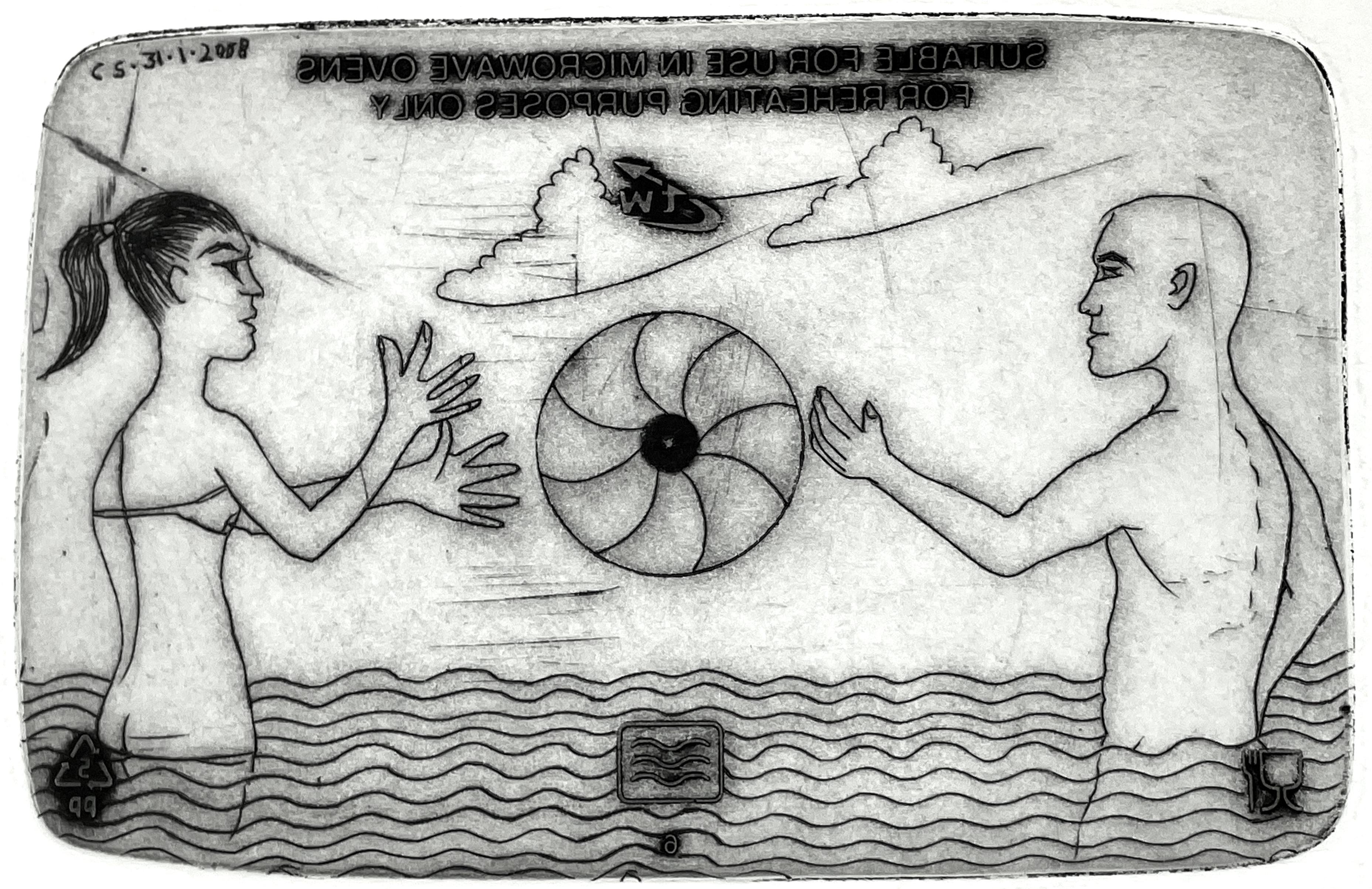
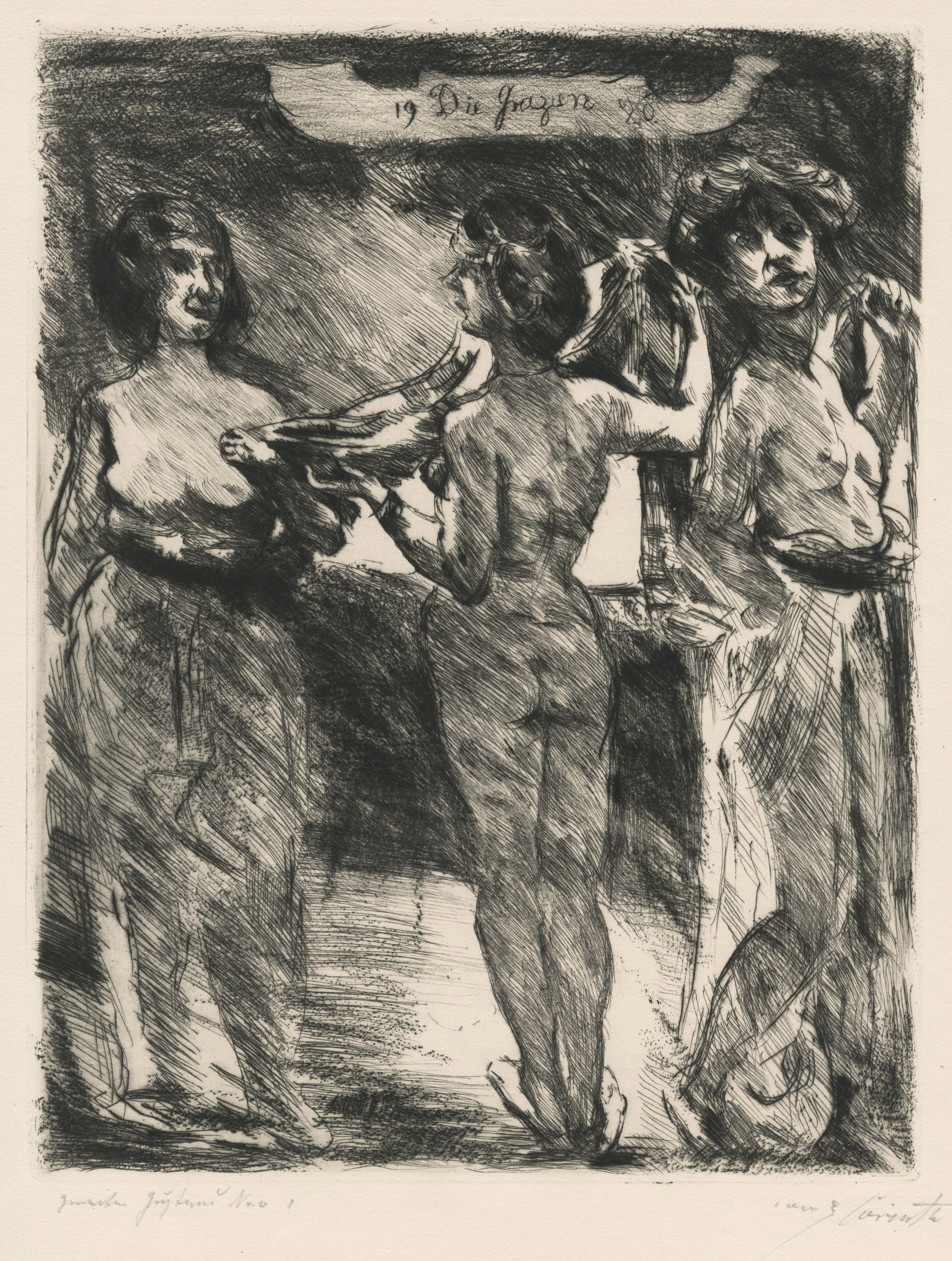
![Peintre et modele [Modele et peintre chauve], 5 septembre 1966 IV](https://a.1stdibscdn.com/pablo-picasso-prints-works-on-paper-peintre-et-modele-modele--for-sale/a_2932/1662735285537/Picasso_Peintre_et_modele_Modele_et_peintre_chauve_5_septembre_1966_IV_drypoint_edition_of_50_16_1_2_x_19_5_8_in_41_9_x_49_9_cm_GNN20488_Pierre_Le_Hors_master.jpg)